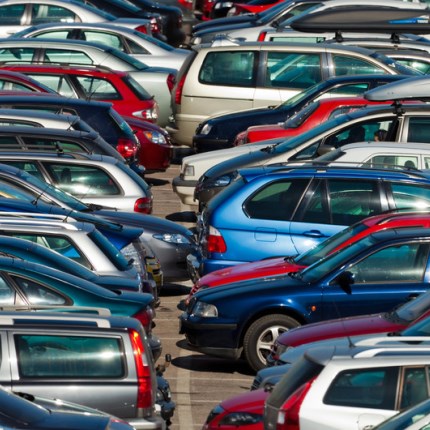 If there is to be one single biggest change to commercial real estate as a result of mass adoption of self-driving cars, many experts say it will be parking lots.
If there is to be one single biggest change to commercial real estate as a result of mass adoption of self-driving cars, many experts say it will be parking lots.
With autonomous cars, experts predict, the need to have a lot to stow fleets of vehicles driven by consumers will diminish. In an ideal scenario, vehicles would be roving around until hailed by a person in a sort of Jetsons world of self-driving taxis. Or, if it’s a personal car, the vehicle could return home until hailed again, or parked in a central location. Either way, Steinberg Architects principal Simon Ha says, there’s going to be far less need for oceans of asphalt with white lines. And that will alter the nature of commercial developments.
“We used to have a saying, ‘Form follows function,’” Simon says (referring to the famous modern architect creed coined by Louis Sullivan). “I rephrase that to say form follows parking.”
Today, and for much of modern CRE history, the size and density of a project hinged on how many parking spots it needed to accommodate the bodies. The bigger the building, the more parking it requires. That formula has become even more of a drawback in the age of mixed-use.
“The cost of parking and the land area you need to accommodate parking really became the driver in the mixed-use design,” Simon says.
Taubman College of Architecture and Planning: The answer may well be no parking requirements in an autonomous vehicle world, says Jonathan Levine, the Emil Lorch collegiate professor of architecture and urban planning at the University of Michigan’s Taubman College of Architecture and Urban Planning.
“What parking requirements tend to do [is] make it more expensive to live in higher-density areas because you have to buy parking bundled with your housing,” Jonathan says.
That thwarts both smart development and a city’s ability to achieve a critical mass needed for an automated car system’s success. Instead, governments and policymakers have to be trained to realize the best solution may often be for the developer to decide for him or herself.
“We should say to the developer, ‘You know, you figure out how much parking to provide.”
Simon, who is a Los Angeles zoning advisory committee member, says the city is examining this issue now and is considering a zero minimum parking ordinance: basically allowing some developments to rise with no parking whatsoever. That thinking is a sea change among officials. And it could mean a sudden surge in available land in major cities, considering by some estimates as much as 25% of an urban center is either deck or surface parking.
“It really changes the nature of a development” if the builder is no longer hamstrung by parking, Simon says. Even parking decks today could see redevelopment within a century. “Structured parking doesn’t last forever,” Jonathan quips. And removing those monoliths from major cities could create “even more face-to-face interaction,” he says.
Bisnow CRE investment advisory firm National Real Estate Advisors attempted to prophesize other major changes to real estate as a result of mass autonomous vehicle use in a January paper.
Among those changes:
- An explosion in bike lanes and urban greenspace.
- Job losses in office buildings using industries like auto insurers and brokers. As the number of accidents is reduced as human error is removed from the equation, “the consequential drop in insurance premiums and profits could lead to widespread job cuts and the need for less office space,” NREA CEO Jeffrey Kanne writes.
- Data centers and creative office space will flourish.
- Many of the US’s125,000 corner gas station/convenience stores could become obsolete, opening even more prime real estate to redevelopment.
- While transit-oriented development demand will increase in the near term, the long-term impact of driverless vehicles could be a boon to the suburbs.
“While driverless cars may make urban life more attractive, long-distance commutes from the suburbs also could become more feasible because of faster drive times and more efficient use of time in the car,” Jeffrey writes. “In the past, as transportation became cheaper and more convenient, people moved farther away. Tomorrow’s 100-mile commute with cars traveling mere inches apart could take as long as today’s 25-mile trip, with far less stress and greater productivity.”
That can boost not just real estate changes, but true economic advantages, says Cushman & Wakefield’s Robert Sammons, who has spent some time exploring the possible effects of driverless tech. Safer roads and less congestion will have a real economic impact. With people commuting to work without actually having to drive, suddenly they have more time to work on work, increasing productivity and even boosting the gross domestic product of the US.
“It is very science fiction-y, right?” Robert says. “But I think it’s going to be the new reality in a decade or so.”

